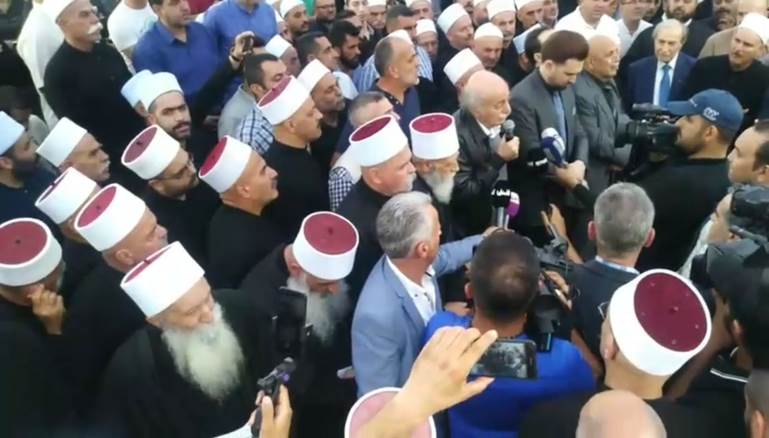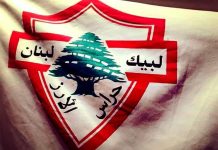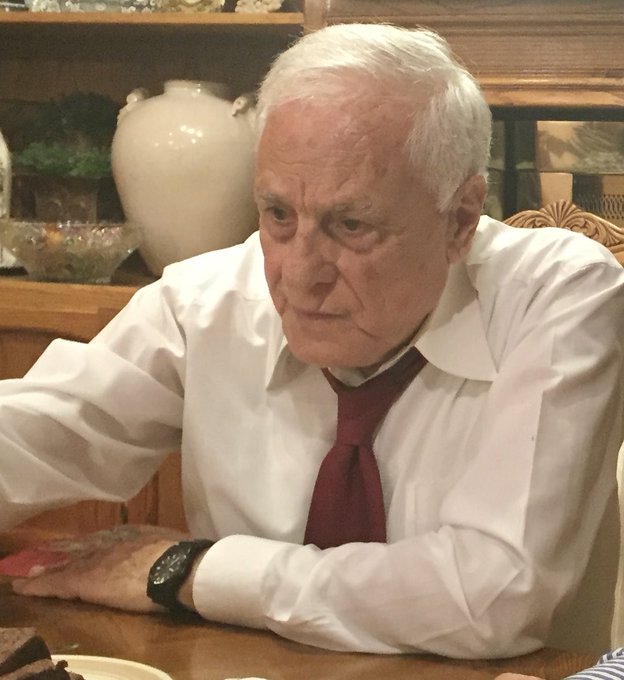What the Suweida Druze Mean to ISIS Employers
Eyad Abu Shakra/Asharq Al Awsat/August 02/18
The Druze (officially, “The Muwahhidoun”) may be unlucky for being the most loyal minority to an identity facing an unknown future. The Druze are, perhaps, “The Arabs’ Arabs”, and the Middle Eastern community that has never felt naturally at ease except with its “Arab” identity.
Ever before the emergence of “Arabism” in its contemporary political context in the late 19th century, the Druze felt most attached to it without much extremism or showmanship. However, while it is true that both the French and British Mandates created new realities on the ground in 1920, 1943 and 1948, and interest-based specificities emerged among the Syrian, Lebanese and Palestinian Druze, it is also true that the “unifying” bonds remained strong and any harm that befell one community deeply touched the other two.
The Druze everywhere are living the aftermath of “The Black Wednesday” massacre in Suweida province (southern Syria). Throughout their history up until the current dark period, the Druze have always had two priorities in life: Defending their land and honor and remaining the masters of their own destiny.
Examining these two priorities, one finds the backbone of the “raison d’etre” of this Muslim Arab constituent community in the Arab Mashreq.
For example, because of their attachment to their land, the Druze have refused to leave their villages in northern Palestine, and tolerated Israeli occupation, and as much as possible, fought within its political system and parties, simply because it respected their specificity. Today, however, they are resisting the Israeli “Nationality Law” (which declares Israel a “Jewish State”) because it discriminates against them, against every Arab, and against anyone who advocates diversity and coexistence.
In Lebanon, the Druze have always fought for their existence and confronted all attempts to penetrate and divide them in a country plagued by sectarianism from the top down. As for Syria, here too, in a continuously changing regional and national scene, the Druze stood up for their identity, culture, independence and even regional independence. In the early 19th century they fought the Egyptian expedition of Ibrahim Pasha, and in the 1920s rose in arms against the French Mandate. They also took part in Pan-Arab, non-sectarian and pro-independence movements. Even their two small concentrations in northwest Syria (Idlib province) and southwest Syria (Quneitra province) have stubbornly and valiantly defended themselves against formidable aggressors and shed a lot of blood in battles for survival.
Today, the Druze are again facing a great danger as they live in a geographical crossroad of intersecting interests of powers much larger than themselves, and all of which seem to lack a proper and clear strategy.
The Syrian uprising initially confused the Druze, so they hesitated in making a well thought out choice, with or against the Bashar al-Assad regime, which has gradually become a “security incubator” for Iranian regional expansionism, a tactical ally of Moscow and a seasonal customer for Washington, in addition to its familiar role as an unofficial “conduit” between Israel and Iran.
The Druze had known all along the implicit “sectarian” nature of the regime and suffered from its intentional harassment and blackmail on the issue of lands, but they were uneasy about some elements of the Syrian uprising their sectarian foreign links. Furthermore, some observers – rightly or wrongly – claim that their tardiness in backing the uprising encouraged other minorities to withhold their support; thus, serving the interests of those sectarian elements, and allowing them to hijack the uprising after benefitting from the policy of brutal suppression and mass displacement adopted by the regime and its backers.
However, the Druze, soon felt that they have no interest in becoming hostages to a regime that, contrary to what it claims, does not protect minorities, but rather uses them as shields, trades in fear and provokes one minority against another. Indeed, as suppression escalated, especially, in the Daraa province that borders Suweida from the west, a strong internal Druze movement rose in Suweida, openly rejecting civil war and calling for carrying arms only in self-defense within the province’s boundaries. The movement, known as “Mashayekh al-Karama” (Sheikhs of Dignity), soon gained great respect for its insistence that the Druze of Suwieda should not fight their brethren in other parts of Syria. The regime’s response to this defiant stance in 2015 was to kill the leader of “Mashayekh al-Karama” sheikh Wahid Al-Bal’ous, who once uttered the famous words: “Our dignity is dearer than Bashar al-Assad!”
At present, there are around 53,000 Druze of conscription age who refuse to fight in for Assad’s regime and the sectarian militias that back it, because they value what is left of the bonds that unite all Syrians. Some observers believe this stance was behind the collusion that allowed “The Black Wednesday” massacre to take place.
Conflicting strategic, as well as tactical, local, regional and international interests, does not allow a certain community to remain neutral and maintain a position that can be an example to follow and put an end to bloodshed, destruction and partition.
There is no need to discuss what ISIS is, nor how and why it is “employed” and “exploited”, and how it has developed. It is enough to say that it is nothing but a pawn each major player uses to its own benefit, while claiming to fight it.
On the other hand, many are talking of diverging positions between tactical partners and allies.
Russia is exploiting Washington’s preoccupation with deciding its priorities to increase its influence in the Middle East, but it lacks the proper understanding of a region it thinks it knows. In fact, Russia has no interest in intentionally harming the Druze, but so far, it continues to blindly follow what the Assad regime wants from it.
Iran’s calculations, however, are quite different. They are based on geo-political revenge against both the Arabs and Sunni Islam. This is what is clear from the policy of systematic displacement, which would include the Druze if they continue to refuse to join its campaign against Arabs and Sunnis.
Finally, there is Israel, the major player in deciding what happens in southern Syria. Israel’s considerations in dealing with Iran vary from selective support and necessary containment. Israel knows what it really wants, and perhaps like Iran, knows also the geo-political and demographic calculations. Thus, the outcome of the developments in southern Syria will be decided by its final choices regarding the limits of Iranian military withdrawal if imposed, and the ceiling allowed for the employment and exploitation of ISIS’ gangs.
مصير دروز سوريا… في حسابات مستخدمي «داعش»
إياد أبو شقرا/الشرق الأوسط/29 تموز/18
ربما كان من سوء طالع الموحّدين الدروز في المشرق العربي أنهم الأقلية الأقوى إيماناً بهوية تبدو سائرة نحو مصير مجهول.
الموحّدون الدروز هم «عرب العرب» – إذا صح التعبير – والمكوّن العربي والشرق أوسطي الذي لم يشعر في يوم من الأيام بارتياح فطري إلا مع هذه الهوية.
حتى قبل ظهور «العروبة»، بمضمونها السياسي المعاصر في أواخر القرن التاسع عشر، كان أبناء هذه الطائفة الأشد ارتباطاً بها، من دون تعصب أو مباهاة.
وصحيح أنه عندما رسم الانتدابان الفرنسي والبريطاني عام 1920، ثم لاحقاً 1943 و1948، حقائق جديدة على الأرض، ظهرت خصوصيات مصلحية عند كل من دروز سوريا ودروز لبنان (والأردن) ودروز فلسطين.
ولكن الصحيح أيضاً أن الترابط بين «أجزاء هذا الكل» بقيت قوية، وظل ألم أيٍّ منها يؤثر في الصميم على الكل.
وعبر التاريخ، حتى اللحظة الحالية السوداء التي يعيشها الموحّدون الدروز في كل مكان بعد مجزرة «الأربعاء الأسود» في محافظة السويداء بالجنوب السوري، كانت عند هذه الطائفة أولويتان:
الأولى، الدفاع عن الأرض والعرض.
والثانية، المحافظة على استقلالية القرار.
وإذا ما درسنا هاتين الأولويتين نجدهما عاملاً مركزياً في فلسفة وجود هذا المكوّن العربي المسلم في المشرق العربي.
كمثال، دفاعاً عن الأرض رفض الموحّدون الدروز مغادرة قراهم في شمال فلسطين، وصبروا على الاحتلال الإسرائيلي وناضلوا في حدود إمكانياتهم ضمن نظامه السياسي وأحزابه لمجرّد أنه احترم خصوصيتهم.
وهم اليوم يقفون بقوة ضد مشروع قانون «يهودية الدولة» لأنه يهدّد وضعهم ويميّز ضدهم، وضد كل عربي، بل ضد كل حريص على التنوّع والتعايش.
وفي لبنان، قاتَل الموحدون الدروز دائماً دفاعاً عن وجودهم، ورفضوا محاولات اختراقهم واختراق صفوفهم في بلد محكوم بالطائفية عرفاً ودستوراً وممارسة.
وفي سوريا، وسط تداول الدول وتعاقبها، قاتلوا دفاعاً عن هويتهم وثقافتهم واستقلاليتهم واستقلال محيطهم.
ومثلما واجهوا في جبل العرب (السويداء) حملة إبراهيم باشا في مطلع القرن الـ19، ثم قاتلوا الانتداب الفرنسي في العشرينات، فإنهم ساهموا في الحركات العروبية والاستقلالية السورية الجامعة المخترقة للطوائف والمذاهب.
بل حتى أقليتاهم الصغيرتان في شمال غربي سوريا (محافظة إدلب) وجنوب غربها (محافظة القنيطرة) ناضلتا بعناد للمحافظة على وجودهما تحت وطأة ضغوط أكبر منهما ودفعتا ضريبة دم باهظة حتى اليوم.
اليوم يجد الموحّدون الدروز أنفسهم في وضع حرج، وإن كانوا مرّوا في سالف الأيام بمثله. إنهم الآن يعيشون في بؤرة جغرافية تتقاطع عندها مصالح قوى عدة كلها أكبر منهم… وكلها تقريباً تفتقر إلى رؤية استراتيجية مصلحية واضحة.
في سوريا ارتبك الموحدون الدروز وترددوا في خيارهم عندما تفجّرت الثورة على نظام بشار الأسد، الذي كان قد تحوّل تدريجياً إلى «حاضنة أمنية» للتوسع الإيراني الإقليمي وشريك تكتيكي لموسكو، وزبون موسمي لواشنطن، فضلاً عن دوره المألوف كصندوق بريد لتل أبيب.
كانوا يدركون جيداً «طائفية» نظام آل الأسد المستترة، كما أنهم قاسوا من تعمده إزعاجهم وابتزازهم في موضوع الأراضي، غير أنهم ما كانوا مطمئنين لبعض فصائل الثورة وارتباطاتها الطائفية الخارجية. وثمة مَن يقول – عن صواب أو خطأ – إن تأخرهم في الوقوف مع الثورة شجّع أقليات أخرى على تبني مواقف سلبية منها، ما خدم بالذات أهداف الطائفيين، وأتاح لهؤلاء ركوب موجة الثورة لاحقاً… مستفيدين من القمع الوحشي والتهجيري الذي اعتمده النظام وداعموه.
ولكن، مع ذلك، ما لبث الدروز أن شعروا أن لا مصلحة لهم في ترك مصيرهم بيد نظام لا يحمي الأقليات – بخلاف ما يزعم – بل يتمترس خلفها ويتاجر بخوفها ويحرّضها، إحداها على الأخرى.
وبالفعل، مع تزايد القمع، ولا سيما في محافظة درعا المتاخمة لمحافظة السويداء، ظهر تيار درزي قوي يرفض الاحتراب الداخلي وحمل السلاح إلا دفاعاً عن النفس داخل حدود المحافظة. وصار لما عُرف بـ«مشايخ الكرامة» مكانة واحترام، لرفضه أن يقاتل أبناء السويداء ضد إخوتهم في المناطق السورية الأخرى.
وكانت النتيجة إقدام النظام عام 2015 على تصفية قائد «مشايخ الكرامة» الشيخ وحيد البلعوس صاحب الكلمة الشهيرة «كرامتنا أغلى من بشار الأسد».
راهناً، هناك نحو 53 ألف شاب درزي في سن الخدمة الإلزامية يرفضون القتال في صفوف جيش الأسد والميليشيات الطائفية التي تدعمه، من منطلق الحرص على ما تبقى من لحمة بين أبناء سوريا.
وثمة مَن يقول: إن هذا الرفض كان وراء التواطؤ الذي أتاح تنفيذ المجزرة البشعة.
إن تضارب المصالح المحلية والإقليمية والدولية، التكتيكية منها والاستراتيجية، كما تعكس «مجزرة الأربعاء الأسود»، لا يريد السماح لجماعة بالمحافظة على حياد قد يصلح تمهيداً ونموذجاً لوقف مسلسل القتل والتدمير والتقسيم.
لا طائل من مناقشة ماهية «داعش» واستخدامات هذا التنظيم وظروف تطوره.
لكن يكفي القول: إنه حجر شطرنج يحرّكه لمصلحته كل من يزعم محاربته.
واليوم ثمة كلام كثير عن فرز مواقف بين الشركاء والحلفاء التكتيكيين.
التدخل الروسي المستفيد من الحال الراهن للقيادة الأميركية يرتّب أولوياته، مع اللاعبين الإقليميين والمحليين، لكنه ما زال يفتقر إلى فهم المنطقة التي يزعم أنه يفهمها.
لا مصلحة لروسيا بالضرورة في استهداف الموحّدين الدروز…
لكن مواقفها حتى اللحظة متماهية مع رؤية النظام.
في المقابل، حسابات إيران مختلفة، فهي تقوم على الانتقام الجيوسياسي من العرب أولاً ومن الإسلام السنّي ثانياً…
وهذا ما تفسره سياسة التهجير الممنهج، التي قد تشمل الموحدين الدروز، إذا تخلفوا عن الانضمام لحربها على العرب والسنة.
أما إسرائيل، اللاعب المهم في الجنوب السوري، فتتفاوت اعتبارات تعاملها مع سياسات إيران بين التأييد الانتقائي واللجم الضروري.
إسرائيل، تعرف جيداً ما تريد. ثم إنها تفهم – ربما مثل إيران – الحسابات الجيوسياسية والديموغرافية، ومن ثم، لا بد أن يتأثر الوضع في الجنوب السوري بخياراتها النهائية إزاء حدود الانسحاب الإيراني… إذا أمكن فرضه، وسقف السماح لعربدة شراذم «داعش» واستخداماته.
*إياد أبو شقرا/كاتب صحافيّ ومحلّل سياسيّ وباحث في التّاريخ، يعمل في صحيفة الشّرق الأوسط منذ تأسيسها




















